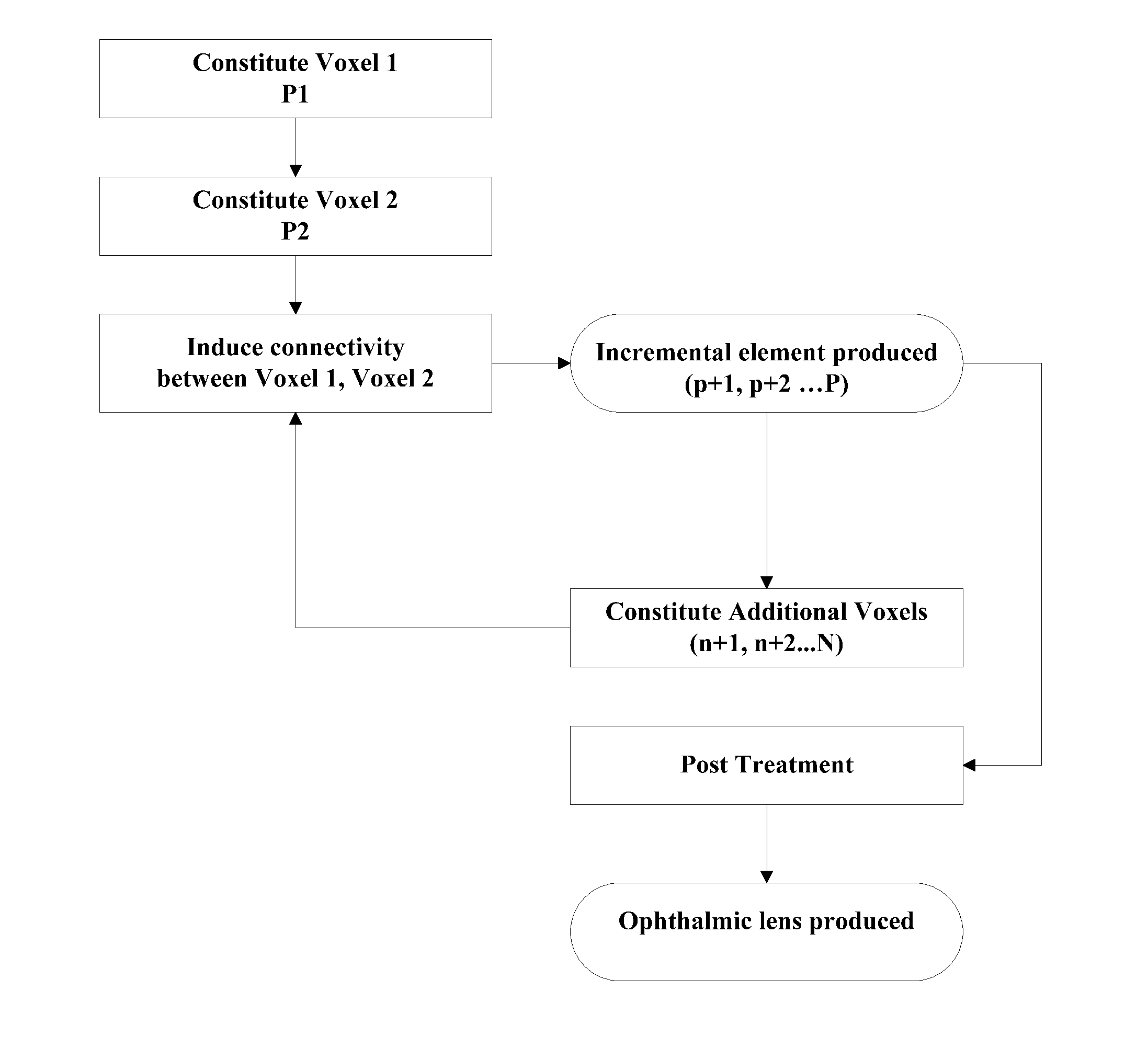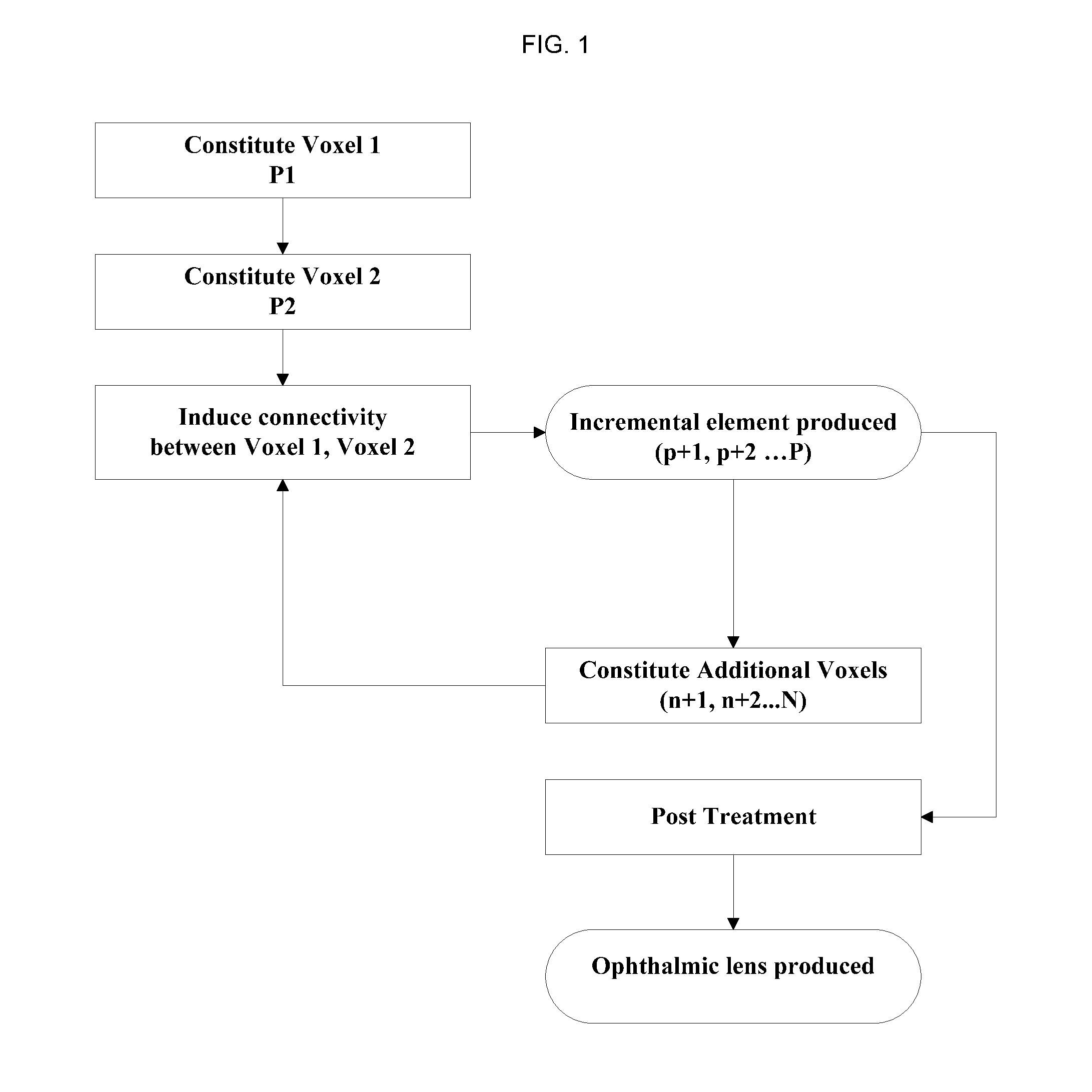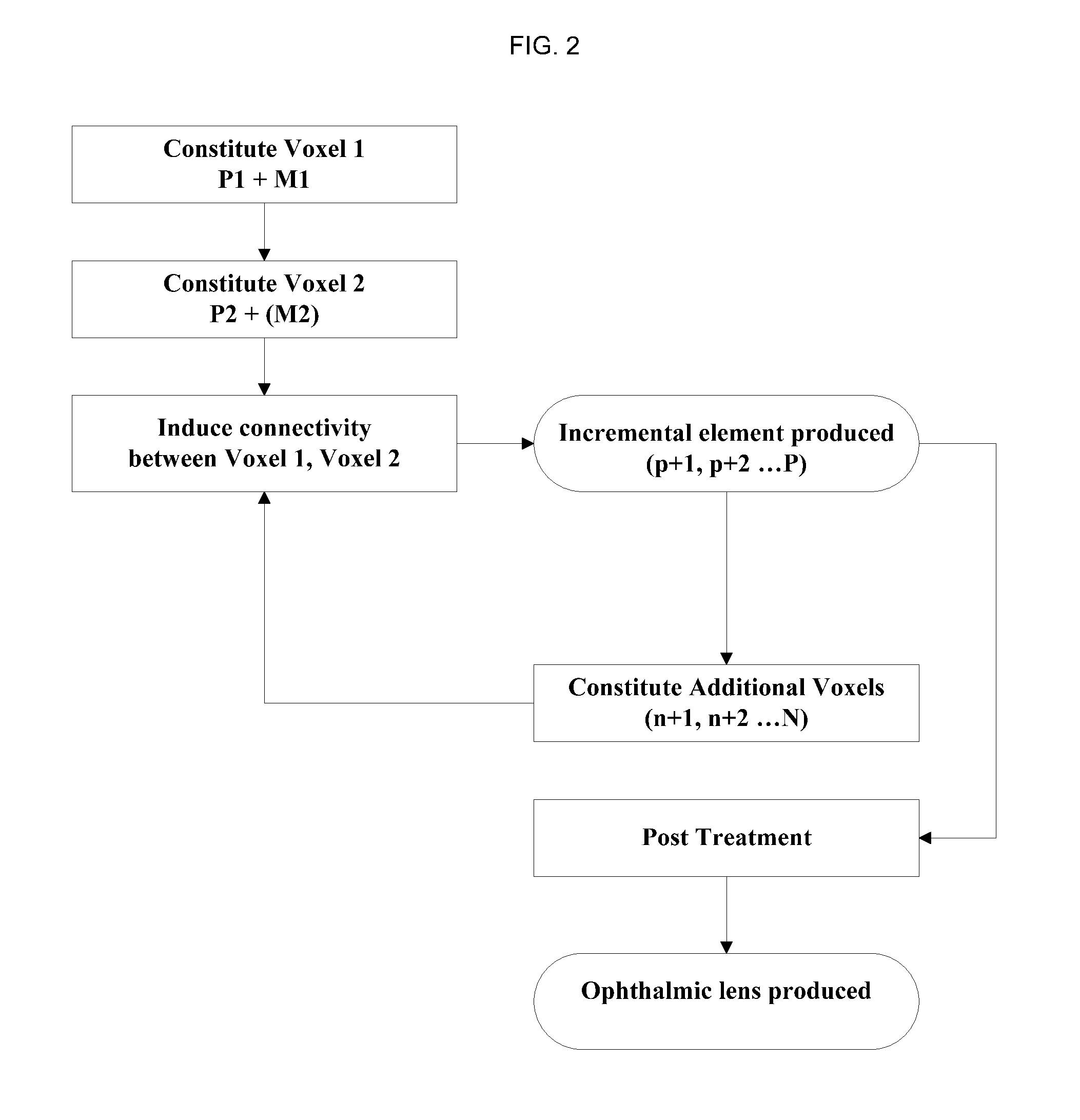Additive manufacturing for transparent ophthalmic lens
a technology of ophthalmic lenses and additive manufacturing, which is applied in the field of three-dimensional transparent ophthalmic elements manufacturing methods, can solve the problems of additive manufacturing technologies that cannot be managed in bulk homogeneity of final products, and the application of such manufacturing methods has not been systematically applied, so as to achieve the effect of improving properties and reducing or no dimensional changes
- Summary
- Abstract
- Description
- Claims
- Application Information
AI Technical Summary
Benefits of technology
Problems solved by technology
Method used
Image
Examples
example 1
[0091]In one example, an additive manufacturing process, such as a fused deposition method, which is known in the art, can use a thermoplastic polymer such as, but not limited to, a polycarbonate (PC) material that is extruded as a first constitution of a first composition having at least one voxel onto a substrate. In other embodiments, the polymer or pre-polymer can comprise a thermoplastic polystyrene, polysulfone, or polyamide. A plurality or series of voxels of the first composition can be constituted onto the substrate. In one exemplary embodiment the first composition can be melt-extruded onto the substrate for use with a print-head, as described above. This first composition PC material can be selected from a relatively high molecular weight PC of greater than about Mn>14,000.
[0092]A second constitution of the same polymeric PC composition or a different polymeric composition as the first PC composition is constituted and then applied to the substrate. In one example, a seco...
example 2
[0095]An isocyanate (NCO) end-capped thiourethane pre-polymer (A), is prepared by reacting a thiol monomer such as MR-7B, (2,3-bis((2-mercaptoethyl)thio)-1-propanethiol) with an isocyanate monomer such as MR-7A (m-xylylene diisocyanate), using a molar excess of isocyanate groups, to produce a first composition (both MR-7A and MR-7B commercially available from Mitsui Chemicals, Inc.). The thiol monomer could be an SH terminated polysulfide.
[0096]A thiol (SH) end-capped thiourethane pre-polymer (B), is prepared by reacting a thiol monomer such as MR-7B, (2,3-bis((2-mercaptoethyl)thio)-1-propanethiol), with an isocyanate monomer such as MR-7A (m-xylylene diisocyanate) using a molar excess of thiol groups, to produce a second composition.
[0097]Either pre-polymer preparation may contain a metal catalyst such as those known in the arts as dibutyltin dichloride or dibutyltin dilaurate for example, or any of the catalysts disclosed herein. A second catalyst such as a UV activated photoanion...
example 3
[0101]In this example, a first composition comprising a polymer and a second composition comprising a monomer can be used in an additive manufacturing process to produce an ophthalmic lens. For example, styrene and allyl methacrylate can be polymerized in solution using an organic peroxide (U.S. Pat. No. 4,217,433) to produce a low molecular weight co-polymer with allyl functionality in a first composition. The co-polymer can be isolated and dried. At least a first voxel from the first composition is constituted onto a substrate. A second composition comprising a thiol monomer (such as MR-7B, described above) can be constituted as a second voxel onto the substrate. Heat and / or UV is applied to the constituted voxels, thereby forming an intermediate element. Additional voxels of the composition described herein can be constituted, and this procedure can be repeated until the final ophthalmic element design is achieved. Final curing or annealing of the monolithic optical element is ac...
PUM
| Property | Measurement | Unit |
|---|---|---|
| refractive index | aaaaa | aaaaa |
| size | aaaaa | aaaaa |
| glass transition temperature | aaaaa | aaaaa |
Abstract
Description
Claims
Application Information
 Login to View More
Login to View More - R&D
- Intellectual Property
- Life Sciences
- Materials
- Tech Scout
- Unparalleled Data Quality
- Higher Quality Content
- 60% Fewer Hallucinations
Browse by: Latest US Patents, China's latest patents, Technical Efficacy Thesaurus, Application Domain, Technology Topic, Popular Technical Reports.
© 2025 PatSnap. All rights reserved.Legal|Privacy policy|Modern Slavery Act Transparency Statement|Sitemap|About US| Contact US: help@patsnap.com



